
Matthew Tilghman was an American Founding Father, planter, and Revolutionary leader from Maryland. He served as a delegate to the Continental Congress from 1774 to 1776, where he signed the 1774 Continental Association.
Claiborne is an unincorporated community in Talbot County, Maryland, United States. The village is located on the eastern shore of the Chesapeake Bay near the mouth of the Eastern Bay at 38°50′15″N76°16′40″W, and uses ZIP code 21624. The 2000 U.S. Census listed the population as 147 and the number of homes as 84, slightly down from its 1941 population of 156. Between 1890 and 1930, the village was a busy port for passenger and then automobile ferry service across the Chesapeake Bay, with numerous stores and motels/resorts, including Maple Hall. A post office was added in 1893 and the Protestant Episcopal Church of Claiborne was built in 1898. In 1912, an elementary school and Methodist Church were added. Before 1912, students attended school in nearby McDaniel. The town's first school consisted of the kitchen of the local railroad pavilion, used as a classroom. In 1913, the town became home to the Claiborne Fresh Air Association, Inc., which was formed for the purpose of providing 10 weeks of fresh air and summer vacation for children who had been exposed to tuberculosis. The role of Claiborne as a terminal for cross-Bay ferries was diminished in 1930 when the primary route shifted to Matapeake in Kent Island. It ended altogether in 1938 when the direct connection from Annapolis to Claiborne was terminated and only an auxiliary shuttle between Claiborne and Romancoke on Kent Island remained. This ended in 1952, with the opening of the Chesapeake Bay Bridge; thus ended all ferry service to Claiborne.
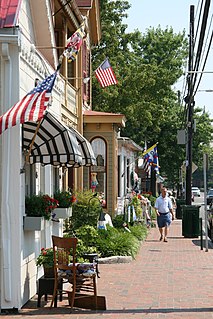
The Saint Michaels Historic District encompasses the historic center of Saint Michaels, Maryland. The town, which has about 1,000 permanent residents, is located on a tributary to the Chesapeake Bay on the Eastern Shore of Maryland. After over 100 years as a center for trade and shipbuilding, the community was incorporated as a town in 1805. Shipbuilding peaked in 1820, and the town's economy became focused more on oyster and seafood collection and packing. In the 1970s, the town transitioned to tourism.
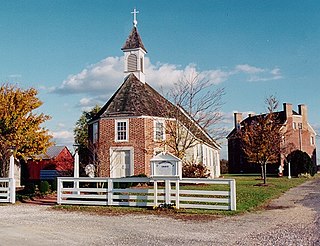
St. Francis Xavier Church and Newtown Manor House Historic District is the first county-designated historic district in Saint Mary's County, the "Mother County" of Maryland and is located in Compton, Maryland, near the county seat of Leonardtown. The district marks a location and site important in the 17th-century ecclesiastical history of Maryland, as an example of a self-contained Jesuit community made self-supporting by the surrounding 700-acre (2.8 km2) farm. The two principal historic structures were added to the National Register of Historic Places in 1972. Archaeological remains associated with the site date back to the early colonial period, mid-17th century.

The Inns on the National Road is a national historic district near Cumberland, Allegany County, Maryland. It originally consisted of 11 Maryland inns on the National Road and located in Allegany and Garrett counties. Those that remain stand as the physical remains of the almost-legendary hospitality offered on this well-traveled route to the west.

Paradise Manor is a historic home located at Hagerstown, Washington County, Maryland, United States. It is a two-story, six bay brick structure painted white with black trim. Its two easternmost bays are recessed in a double porch which is included under the main roof span. The walls rest on low fieldstone foundations. Also on the property is a large bank barn.
Clay's Hope is a historic home in Bellevue, Talbot County, Maryland, United States. It is a 2+1⁄2-story, 3-bay Flemish bond brick house with the gable roof, built around 1783. Also standing on the property is an array of outbuildings including the last known tobacco house to survive in Talbot County; a frame structure built around 1800. Other structures include a smokehouse-like frame structure built as an implement storage building and an early-19th-century gable-roofed structure with built-in seats that has been converted into a gazebo. A small Harrison family cemetery is also on the property.
Compton is a historic home in Trappe, Talbot County, Maryland. It is a two-part Flemish bond brick dwelling, which is the result of two major building periods and subsequent minor alterations. The main part is five bays long with a three-brick belt course between floors. The second part is a 1+1⁄2-story kitchen / dining room wing. Also on the property is a two-story brick milkhouse. It was home to Maryland's 18th Governor Samuel Stevens, who expanded the building to its present configuration.
Crooked Intention is a historic home in St. Michaels, Talbot County, Maryland, United States. It is a 1+1⁄2-story brick dwelling, three bays wide with wings, built about 1753. A 1+1⁄2-story Flemish bond wing was added in 1956. Also on the property is the original brick smokehouse and a beaded clapboard dairy.
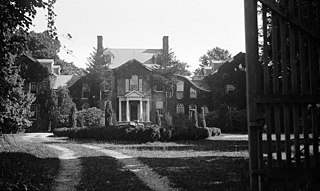
Hope House is a historic home located near Easton, Talbot County, Maryland. It was listed on the National Register of Historic Places in 1979.

Jena is a historic home in Oxford, Talbot County, Maryland. It is a 1+1⁄2-story brick structure with 19th- and 20th-century additions. It is faced in Flemish bond and distinguished by its first-story 9/6 windows with unusual canted and paneled reveals.
Myrtle Grove is a historic home in Easton, Talbot County, Maryland. It consists of a frame section dating from the first half of the 18th century, a 1790 Flemish bond brick section, and a 1927 frame wing. The oldest section is five bays wide and one and a half stories tall on a brick foundation laid in English bond.

Old Bloomfield is a historic home at Easton, Talbot County, Maryland, United States. It is a large and sprawling structure constructed in three major sections: a 1+1⁄2-story, three bay brick section with a steeply pitched roof built about 1720; a 1+1⁄2-story frame addition on the southwest gable built about 1840; and a 2-story frame wing on the southwest end of this earlier addition. Also on the property is a small frame dairy, a heavy timber-frame crib, and a barn. It has remained in the same family as a working farm continuously since the 17th century.
Orem's Delight is a historic home at Bellevue, Talbot County, Maryland, United States. The house, which was built about 1725, is a 20-by-25-foot, 1+1⁄2-story brick structure with an interior chimney. It is one of the few small 18th-century structures to have survived without incorporation into a larger dwelling.
The Wilderness, or High Banks, is a historic home at Matthews, Talbot County, Maryland, United States. It overlooks the Choptank River and was constructed in two periods. The smaller 2+1⁄2-story, four-bay-long brick structure is attributed to the 1780-90 period, and the larger portion is in Flemish bond brick and dates to around 1815. Also on the property are two early outbuildings, a smokehouse, and dairy. It was the home of Daniel Martin, the 20th Governor of Maryland.

Godlington Manor is a historic home located at Chestertown, Kent County, Maryland, United States. It is a frame gambrel-roof structure with a long frame 1+1⁄2-story kitchen wing. The house features much of the original beaded clapboard. Also on the property is a frame milkhouse, a brick smokehouse, and a boxwood garden.
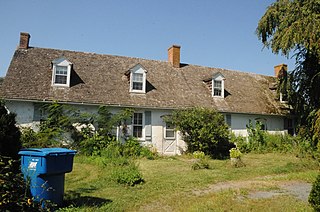
White House Farm is a historic home located at Kennedyville, Kent County, Maryland, United States. The oldest section of the 1+1⁄2-story stuccoed brick house was built in 1721. The house is located on an elevated site, within an informally landscaped yard which retains evidence of historic terracing. Also on the property is a late-19th-century brick dairy.
The Persistence is a Chesapeake Bay log canoe, built in the 1890s, possibly by John B. Harrison in Tilghman, Maryland. She measures 32'-41⁄2" long, with a beam of 6'-111⁄2" and is double-ended with no longhead on her bow. She is one of the last 22 surviving traditional Chesapeake Bay racing log canoes that carry on a tradition of racing on the Eastern Shore of Maryland that has existed since the 1840s. She is located at St. Michaels, Talbot County, Maryland.
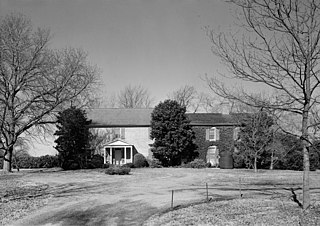
Bowlingly, also known as Neale's Residence and The Ferry House, is a historic home located at Queenstown, Queen Anne's County, Maryland, United States. It is a large brick dwelling house constructed in 1733 on a bluff overlooking Queenstown Creek. The original house is a two-story brick structure that is seven bays long and one room deep, with flush brick chimneys at either end of the pitched gable roof. On August 13, 1813, a flotilla of British Royal Navy warships landed at Bowlingly's wharf during the War of 1812. British troops who disembarked from the warships proceeded to sack the home before being engaging the local Maryland militia.
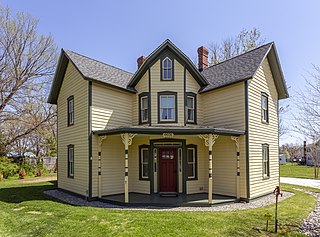
The Tilghman Watermen's Museum records the maritime traditions of the people of Tilghman Island and the unique way of life of the watermen who lived on the island. It is located on Tilghman Island, Talbot County, Maryland, United States.















